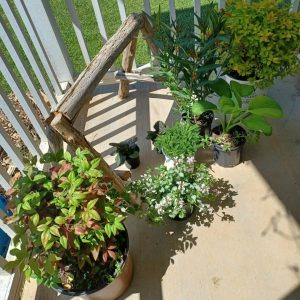Every spring, I wrestle with one particularly strong urge: the itch to plant early. Down here in Southeast Oklahoma, we’ve all learned (sometimes the hard way) that March and even early April can still throw us a solid frost—or worse, a full-blown freeze. But this year, I managed to resist.
Well… mostly.
The day after what my husband swears was the last frost, I felt the sun warming up the soil, saw new green growth pushing through last year’s mulch, and I couldn’t help myself—I headed to the local nursery. There’s something about walking among rows of hopeful little plants that lifts the soul. I picked out a few (okay, more than a few) beauties to start the season. Here’s what followed me home and how I plan to care for them:
🌸 Pink Pewter Lamium (Lamium maculatum ‘Pink Pewter’)
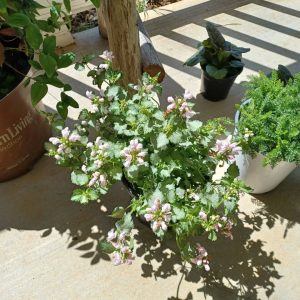 Zones: 3–8
Zones: 3–8
Light: Part shade to full shade
Water: Average; avoid soggy soil
Type: Perennial
Deer resistant: Yes
This little gem is a ground cover that thrives in shade—perfect for the north side of the house where most plants pout. It has silvery leaves with soft green edges and charming pale pink flowers that bloom in spring. It spreads nicely but isn’t a thug, and it brightens dark spots beautifully. Bonus: it’s deer-resistant and doesn’t need much babying once it’s settled in.
🌿 Double Play Candy Corn® Spirea (Spiraea japonica)
from Proven Winners
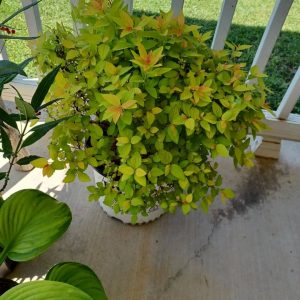
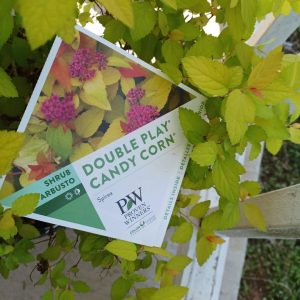 Zones: 4–9
Zones: 4–9
Light: Full sun
Water: Moderate; drought-tolerant once established
Type: Deciduous shrub
Deer resistant: Moderately
I was drawn to this one for the color alone—it literally looks like candy corn in the spring, with bright orange new growth that matures to yellow and then finishes the season with rich red tips. It’s compact (around 18-24″ tall) and puts on pinkish-purple blooms in late spring. It’s a stunner in the front of a bed or mixed border.
🦋 Tropical Milkweed (Asclepias curassavica)
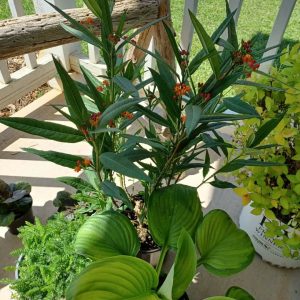 Zones: 8–11 (but grown as an annual in colder zones)
Zones: 8–11 (but grown as an annual in colder zones)
Light: Full sun
Water: Low once established
Type: Tender perennial / Annual in SE OK
Deer resistant: Yes
Attracts: Monarch butterflies
Yes, I know there’s been some controversy around tropical milkweed, but I plant it with intention. It’s a nectar powerhouse for butterflies, especially monarchs. I do cut it back in the fall to avoid confusing migrating monarchs. The red and orange blooms are vibrant, and this plant brings literal life to the garden.
🌼 Yarrow (Achillea millefolium)
 Water: Low; drought-tolerant
Water: Low; drought-tolerant
Type: Perennial
Deer resistant: Yes
Attracts: Pollinators, especially bees and butterflies
A classic choice for cottage-style gardens, yarrow is one of those set-it-and-forget-it plants. It doesn’t mind poor soil and actually prefers it to rich conditions. The feathery foliage adds texture, and the blooms come in many colors. I picked one advertised to have soft yellow flowers that should bloom through summer.
🌸 Blush Pink Nandina (Nandina domestica ‘Blush Pink’)
from Southern Living Plant Collection
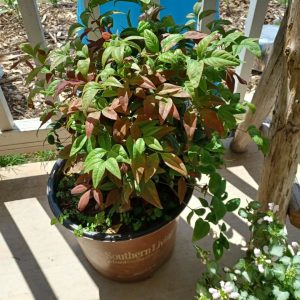 Zones: 6–10
Zones: 6–10
Light: Full sun to part shade
Water: Moderate
Type: Evergreen shrub
Deer resistant: Yes
This one had me at blush pink. New growth emerges with a delicate pink hue that deepens with cooler temps. It’s compact, non-invasive, and doesn’t produce berries like some other nandinas, which is good for bird safety. It keeps a tidy shape and gives four-season interest.
🌿 Guacamole Hosta (probably!)
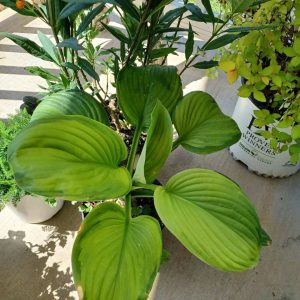 Zones: 3–9
Zones: 3–9
Light: Morning sun, afternoon shade
Water: Moderate
Type: Perennial
Deer resistant: Unfortunately not
The tag just said “Hosta,” but a little digging (pun intended) and I’m nearly certain it’s a Guacamole—wide lime green leaves with darker green margins and a slightly shiny texture. It gets large and makes a great leafy focal point. I’ll have to watch out for deer, though—they seem to think hostas are salad bars. (also a slug and snail favorite)
🌱 Ajuga reptans ‘Burgundy Glow’ (probably!)
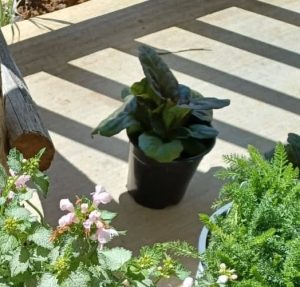 Zones: 3–10
Zones: 3–10
Light: Part sun to full shade
Water: Moderate; prefers moist, well-drained soil
Type: Groundcover perennial
Deer resistant: Yes
Insect friendly: Attracts pollinators
This colorful groundcover caught my eye with its blend of green, pink, and cream variegated leaves. The little purple-blue flower spikes are a spring bonus. It spreads by runners but is fairly polite, especially in shaded areas. It’s great for edging paths or tucking into spaces under shrubs. I purchased a few of these to get things started a little faster since they do take a little time to spread. I’ve grown ajuga in the past – Ajuga tenorii Chocolate Chip and absolutely loved the colors. Hopefully I’ll run into that variety again and add it to my collection!
Wrapping It All Up
So here’s to hopefully the last freeze of the season—and to new growth, fluttering butterflies, and quiet evenings in the garden.
Special thanks to Wilson’s Farm in Pottsoboro, Texas for always being super friendly and helpful!

